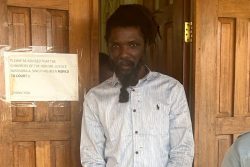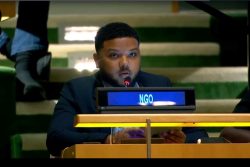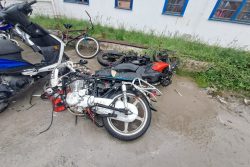Introduction
In the previous article the horrors and trauma women endured under chattel slavery before 1833 were discussed – the psychological trauma of the denial of their personhood and humanity, their dual role of producers of staples to ensure the profitability of the plantation and that of reproducers i.e. providing the next generation of slaves for the plantation. After abolition in 1807 this latter role often led to increased brutality at the hands of the planters. Additionally, under chattel slavery, gender gave the slave master a formidable mechanism of control- brutal rape and other kinds of unspeakable sexual exploitation. For women it is their continued sexual exploitation one of the main end results of trafficking in persons more than anything else that defines modern slavery. The focus of this article is on women and modern slavery.
Modern Slavery: some definitions
Kevin Bales stated that if slavery is defined as the legal ownership of one person by another then slavery has virtually disappeared. However, he posited that the key to slavery is not ownership, but control through violence or the threat of violence. Modern slavery is this coupled with the economic exploitation in which someone is paid nothing.
Starting in 1926, there has been an evolution in the definition of slavery in international agreements. Under Article 1 of the “Slavery Convention of 1926” slavery is defined as “the status or condition of a person over whom any or all of the powers attaching to the right of ownership are exercised.” The convention also prohibited all aspects of the slave trade. It also stated that states should prevent compulsory or forced labour from developing into conditions similar to slavery. In 1948, UNGA adopted the Universal Declaration of Human Rights whose Article 4 states “no one should be held in slavery or servitude; slavery and the slave trade are prohibited in all their forms.”
The Supplementary Convention of 1956 extended and broadened the definition of slavery set out in the 1926 Slavery Convention. Article 1 recommended the abolition of practices that create the circumstance of servile status which include debt bondage, serfdom, unfree marriage and the exploitation of young people for their labour. However, it was not until 1966 that the obligation under the Universal Declaration was given the international legal clout with the passing of two binding covenants – the International Covenant on Economic, Social and Cultural Rights and the International Covenant on Civil and Political Rights. Article 6 of the former recognizes the right to work and this includes “the right of everyone to gain his living by work which he freely chooses or accepts.” The International Bill of Human Rights is made up of the aforementioned two covenants, the Universal Declaration and the Optional Protocol to the Civil and Political Covenant. In the 1998 The Rome Final Act, trafficking is added to the definition and slavery is redefined as “the exercise of any or all of the powers attaching to the right of ownership over a person and includes the exercise of such power in the course of trafficking in persons, in particular women and children.
Trafficking and Trafficking In Persons
Trafficking is defined as the modern slave trade and trafficking in persons especially for sexual exploitation as the modern slavery. In the second half of the 20th century especially after the end of the Cold War, there was a significant increase in trafficking in persons. This led to the passing of the Anti Trafficking Protocol in 2000. It defines trafficking in persons as
The action of recruitment, transportation, transfer, harbouring or receipt of persons
By means of: the threat or use of force, coercion, abduction, fraud, deception, abuse of power or vulnerability, or giving payment or benefits to a person in control of the victim
For the purposes of: exploitation, which includes exploiting the prostitution of others, sexual exploitation, forced labour, slavery or similar practices, and the removal of organs
The consent of the victim is considered irrelevant where illicit means are established, but criminal law defences are preserved
Bales posited that the root causes of trafficking in persons are the greed of criminals, economic pressures, political instability and transition, and social and cultural factors. Criminal groups in particular get involved in trafficking because “it is a high-profit and often low-risk venture; because people, unlike other ’commodities’, can be used repeatedly; and because trafficking in persons does not require a large capital investment.” He further stated that many persons become prey to trafficking because they seek a better life or enhanced economic opportunities. This makes them vulnerable to false promises of good jobs and higher wages. The scourge of trafficking is further exacerbated by political instability, militarism, civil unrest, internal armed conflict, and natural disasters. Add to this the fact that in some countries social practices like the devaluation of women and girls in society contribute to trafficking.
He identifies several stages of trafficking. The first stage is the context of vulnerability whose determinant is primarily poverty and deprivation. The second stage is that of recruitment which often involves family and community members or contact with what appears to be a legitimate employment agency that for a fee would facilitate migration. The third stage involves removal sometimes by force, often by consent of the victim to be smuggled. The fourth stage is the transportation of the victim through several modes of travel. Stage five involves the establishment of control over the victim firstly through confiscation of travel and identity documents. This is usually followed by harsh or brutal treatment to establish fear and obedience. The next stage is the arrival. This is the stage at which the victim finally realizes their plight. They are told of the large often fraudulent debts incurred or suffer the threat or violent control that characterizes slavery. The seventh stage is that of exploitation often including psychological manipulation. Finally, there is the resolution stage often through death or on rare occasions through escape.
Women as victims of trafficking
“Trafficking is the modern form of slavery increasingly prevalent 200 years after William Wilberforce succeeded in abolishing slavery in Britain’s colonies.” The vast majority of the victims are women and children who are used mainly for prostitution. They are forced to endure physical and sexual violence, sexual assault, no freedom of movement and threats to their families. It is estimated that nearly 12.3 million people are enslaved worldwide and many countries are involved at different levels- as destination countries which harbour and exploit the slaves; transit countries through which people are trafficked and source countries which fuel the trade. Many of the countries of the Caribbean, Central and South America are identified as source countries. Cuba and Brazil are identified as source countries for the purpose of sexual exploitation. They are regarded as a major destination for sex tourism and serve thousands of European and North American tourists.
In 1997, over 1,000 women from Asian countries were transported to the US and forced to work in brothels throughout the country. According to one estimate, close to 50,000 women are smuggled into Western Europe every year by Russian and Albania criminal networks. In Britain 6 out of every 10 women in London’s brothels have been trafficked from countries like the Ukraine. Police in Scotland claimed that in 2006 over six thousand women were sex slaves imported from Eastern European countries. They were imprisoned and raped before being forced into sex slavery. Iran provides women and girls for sexual exploitation to countries within Europe. In China, in addition to Chinese citizens trafficked out of the country for sexual exploitation and forced labour there is significant internal trafficking. An estimated 10 to 20,000 persons are trafficked annually.
According to the US government estimate based on 1997 data 700,000 thousand persons, are trafficked across national borders worldwide each year. Women comprise 80% of the victims, 50% are children and 70% of these women and children are used for sexual exploitation. The International Organisation for Migration estimated that in 1997 the number of victims trafficked internally and across national borders was 4 million. The FBI estimated the economic value of human trafficking to criminals as a staggering US$ 9.5 billion annually. The above statistics serve to underscore Bales’ contention that “Today slavery has moved away from slaves as capital investments to the use of slaves as inputs in an economic process from fixed assets to flexible resources.” As in the waning decades of the era of chattel slavery it is women who constitute the bulk of those “flexible resources.”








